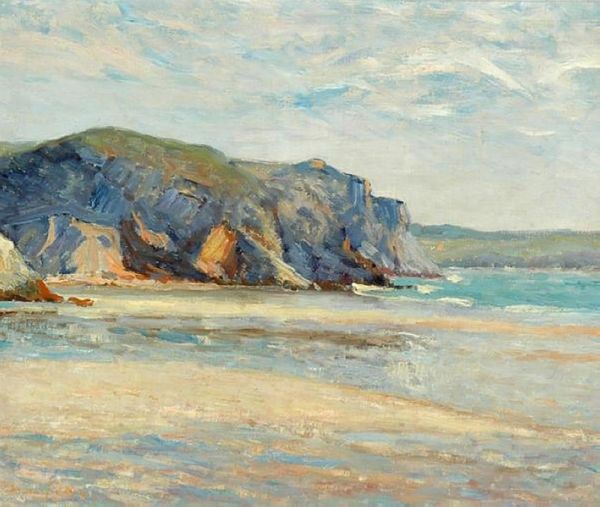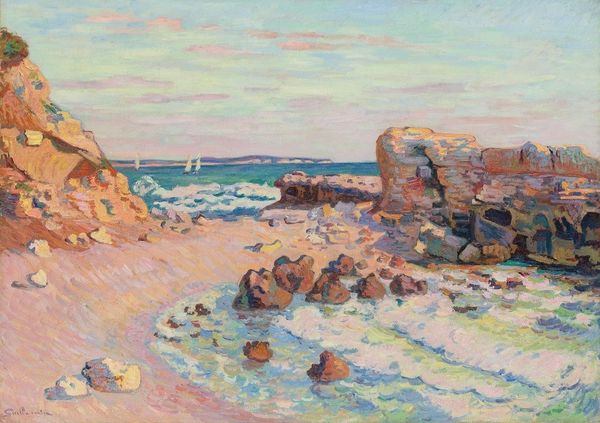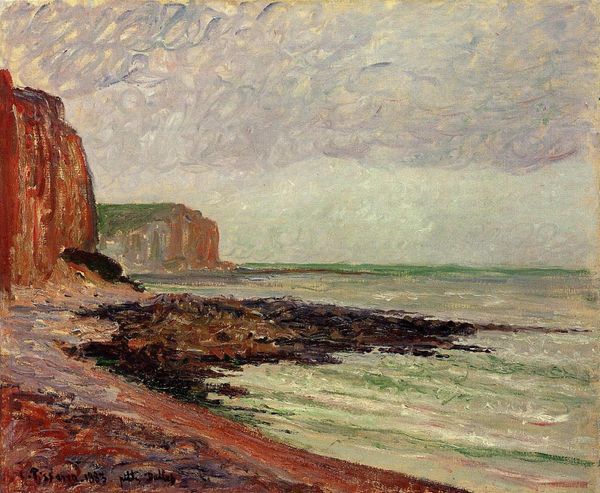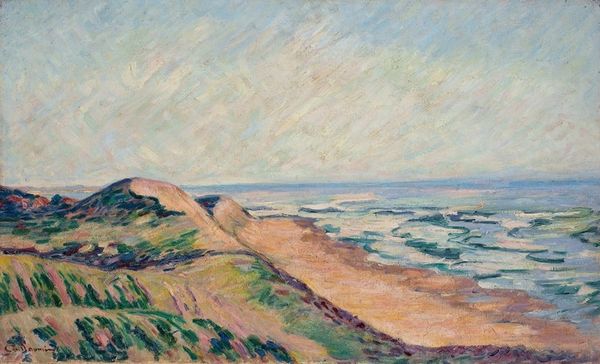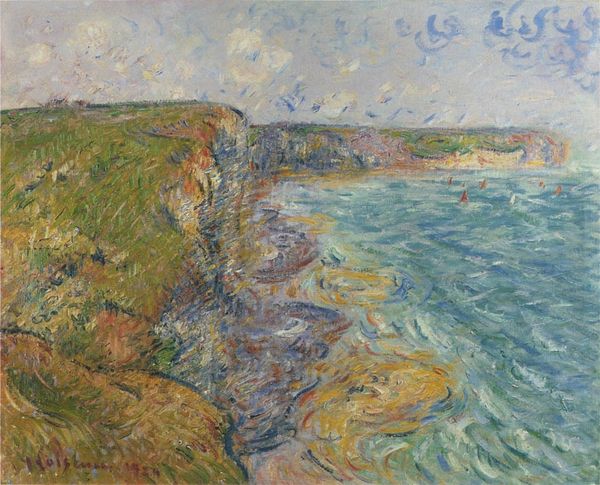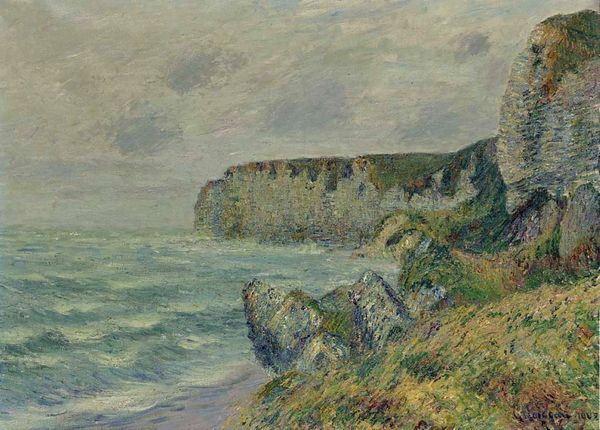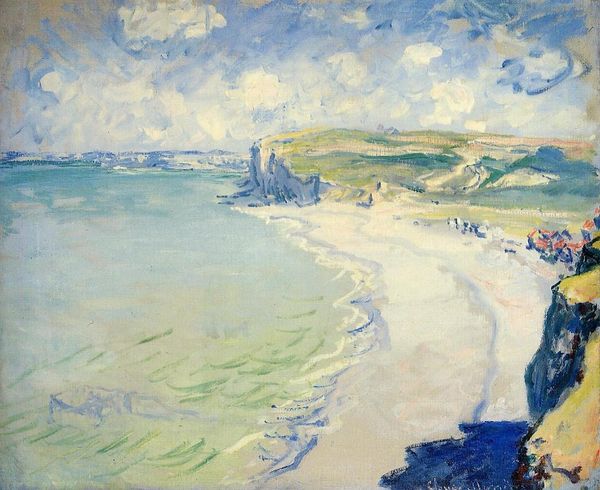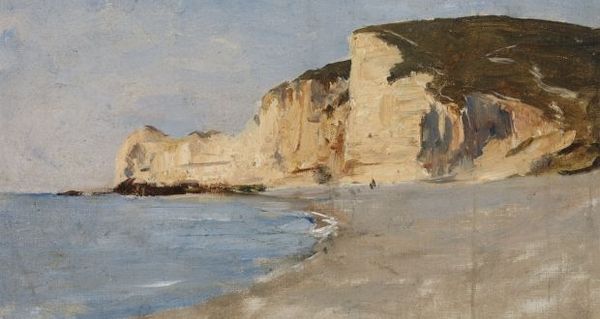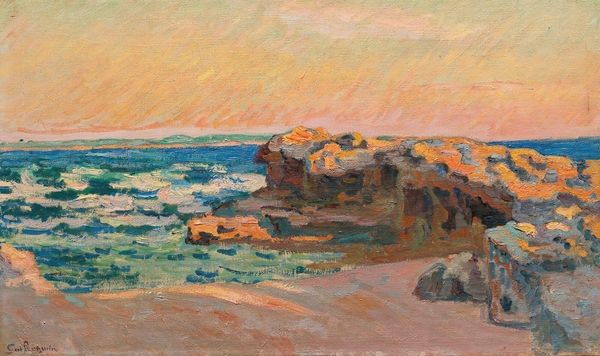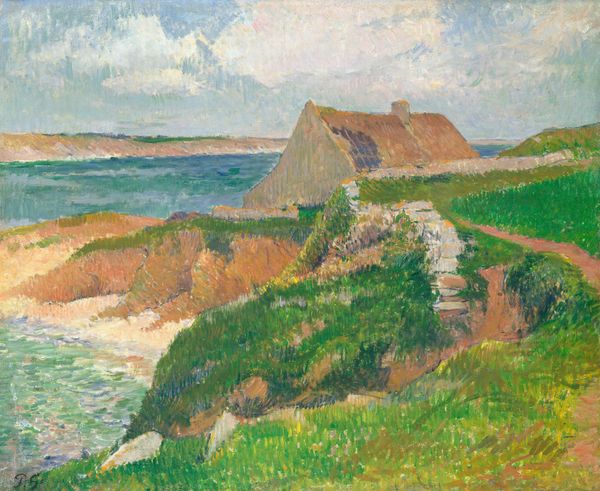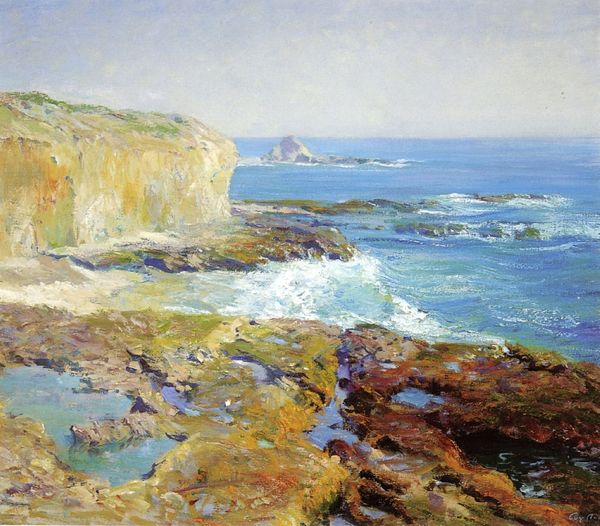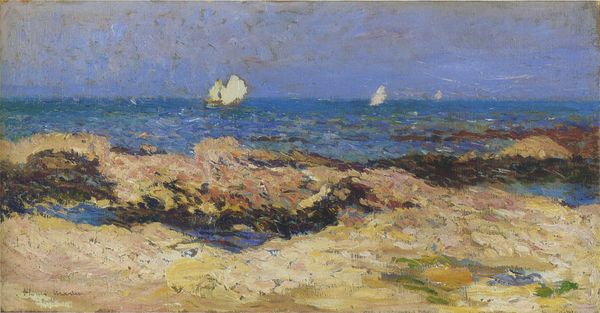
Copyright: Public domain
Curator: Looking at this composition, the colors seem to evoke a sense of tranquility, almost melancholy. What is your read? Editor: This is Gustave Loiseau's "Cliffs at Petit Dalles, Normandy," painted in 1908. It’s an oil on canvas, characteristic of his impressionistic landscapes. His vision here strikes me with such careful brushwork. The rendering of light and shadow defines every cliff edge, every wave. Curator: Yes, I notice the very thick impasto that provides a textural richness to the whole piece. The way Loiseau captured the unique geography of Normandy brings to mind its cultural weight during that period. Those cliffs, after all, were silent witnesses to historical upheavals. Editor: Observe, also, the arrangement. Loiseau’s masterful technique truly shines. Notice the strategic placement of the rocks in the foreground creating depth and drawing the eye towards the cliffs. What do you make of those figures on the beach, rendered so small? Curator: Precisely! It reminds us that this natural grandeur dwarfs the human presence. Those little groups become part of a broader conversation about the ephemeral nature of human activity versus the lasting power of the landscape itself. It also hints at themes around class and leisure. Consider who had access to coastal locations like this. Editor: Interesting, because in strictly formal terms, I'm interested in the contrast of colors—the cool blues and greens of the ocean set against the warm pinks and creams of the cliffs, an almost perfect equilibrium. How would this scene resonate for the viewer, steeped as they were, perhaps, in post-impressionist color theory? Curator: Maybe the painting echoes wider shifts in societal perspectives where artists start focusing on the experiential. What did it mean to exist within and witness such historical transformation, how did these people feel during a critical point? It makes you consider the artist’s background, politics. Editor: Whether understood through the lens of material structures or intersectional identity, this piece succeeds in inviting ongoing interpretation. Curator: A moment of introspection, set against the eternal, unyielding face of nature and history, an evocative paradox for all who pause and consider.
Comments
No comments
Be the first to comment and join the conversation on the ultimate creative platform.
